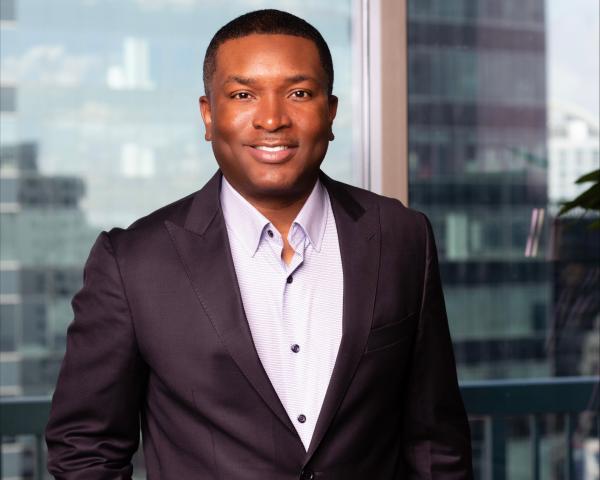Paul Carroll
Bryan, you’ve been sounding the omnichannel theme, and, as we look forward to 2024, I’m hoping you can start us off by describing what you think the opportunities are and explaining why they’re becoming available now.
Bryan Davis
When we talk about omnichannel, we mean having digital capabilities, our call center operations and our field operations all working harmoniously -- humans and digital working together.
The customer needs exit ramps at certain points. Sometimes, they just want a quote and not to be bothered. Other times, they just want to get advice and not to be bothered. Sometimes, they want to transact completely digitally without being bothered.
That's not as many as you may think. Most folks are somewhere in the middle. They might say, "I want a quote, I want to learn and be left alone. But I do want to check in with someone to make sure that I'm buying the right thing," Insurance is complicated. You may have some folks who say, "Hey, I value human touch. I might want to go into the office and talk to a person."
So our thinking is, you give customers choice. The vision of VIU by Hub is to enable acquisition and service however the customer prefers.
And what has accelerated this capability is COVID. I mean, the world literally went digital overnight. Commerce had to keep going. That led to an advancement in cloud computing, so data prefill is no longer a hindrance. I can store your roof type and how many people are in your house. I don't need you to answer 20 questions any more to get you a quote. And the development effort for the connectivity for all those exit ramps that I talked about is getting easier. With low-code and no-code platforms, my 13-year-old daughter can program a quote experience now.
Advancements in technology have enabled capabilities that even three to five years ago would not have been possible.
Paul Carroll
You've also talked in the past about market conditions and customer behavior as drivers.
Bryan Davis
I grew up on the carrier side. I have been in this industry 24 years now. And for most of that time, we’ve had a soft market, partly because of macroeconomic policies such as quantitative easing. But interest rates are up dramatically. There have also been disruptions to the supply chain and other effects from COVID, and whether you talk about climate change or use another term, weather damage is happening in places where it didn’t use to happen. I mean, it's icing in San Antonio. It's hailing in Arizona.
When you couple that with inflation, we wind up with a hard market and shrinking supply.
When the market was soft, customers could easily go online and get a quote from many different aggregator functions, many different carriers. Well, not anymore.
Carriers put a lot of friction in the system, often pushing customers to go talk to somebody even though they never had to talk to anybody in the past. Non-renewal notices are now par for the course. Or you get a renewal that says you no longer have coverage for replacement costs. You have coverage for actual cash value. Imagine a customer who got homeowners coverage directly, with no agent: “What’s actual cash value? How do I understand this?" Who do they talk to?
That need for advice is pushing customer sentiment for omnichannel.
We’re also seeing a lot of non-rate initiatives in the industry, maybe a new payment plan or new underwriting terms. But customers may not have time to schedule an appointment and go visit an agent between the hours of 3pm and 5pm. You need to be able to offer that advice digitally.
Our thesis is that there is value in bringing choice and advice in omnichannel but delivering it in a more modern way to remove customers’ pain points.
And COVID changed a lot of thinking. A customer maybe said they would never interact with their agent on Zoom or Teams. Well, that's the only way you could have interacted with your agent during COVID. Once customers got a taste of the technology, many realized they no longer must go into a brick-and-mortar office.
Paul Carroll
People have been talking for a good 25 years now about the “Amazon effect.” Amazon lets me hit one button and buy something, and customers hold other companies in other industries to that sort of standard of simplicity. Just about every company suffers by comparison. Insurers certainly do. Could you walk us through where the fracture points are in the insurance buying process?
Bryan Davis
If you think about a typical value chain from insurance, there's what we like to call discover-to-quote. Let's say somebody is moving and needs to figure out what insurance they need for a house closing or new auto insurance if they move from, for example, New Jersey to Florida. We call that the discovery phase. New Jersey and Florida are different, and we need to get advice and counsel about what we should do. What should the experience be there?
The best experience for discovery, not only in the insurance industry but in any industry, looks like a Google, so you should incorporate those principles.
Then you go to the next phase, which is quoting.
You keep pulling that thread all the way through the value chain, to minimize the friction on the handoffs. And you can do that now through cloud computing APIs [application programming interfaces]. You can say, ”Give me the Google type of APIs for that experience” -- and a lot of these are being delivered just on the cloud hosting platform, so you eliminate the friction. Before, it was like you had discovery over here and then a whole other quoting site over here. The information didn’t even transfer from one place to the next.
And because of that, you might just have to start the whole process over. Think about that from a customer standpoint. Personally, that drives me crazy. I spent all that time and already provided my information, and then I finally get on the phone, and they say, “Can I have your name?” Didn't I just give you all that?
Those are some of the things that we're talking about on the drops and handoffs that lead to a less than optimal experience. On platforms like Amazon, from discovery all the way down to service, they know who I am, they know what I watched, they know what I like. In insurance, we need to close the gap. That’s what customers are expecting now. And that’s what insurance distributors should be thinking about delivering.
Paul Carroll
As you continue to enhance the experience, what might it look like in a year or three?
Bryan Davis
The ultimate experience would be to place insurance wherever a customer wants insurance to be placed. If you buy a house, how would you feel about having insurance just come with the mortgage? That’s possible now through technology that enables what’s called embedded insurance. But instead of just giving the customer one insurance carrier option, what about embedding a marketplace in that experience so they have choice?
Insurance can be embedded along with the things that matter most to customers. However, it's not like customers are waking up in bed, thinking, “The new vanishing deductible is coming out next week.” Customers are, however, waking up thinking about the new iPhone or the Air Jordan sneakers that are coming out. Customers have a ranking of what is more prioritized.
That's what our customers told us. They're busier with their heart, their family, their TV binging, and they want to be less busy with their head. So let's make insurance easy. Let's attach it to other purchases using the technologies available to do that.
You wind up with more of an ecosystem approach, where everyone needs to declare their place and where technology is the glue that brings everything together in a seamless manner for consumers.
Paul Carroll
I certainly subscribe to the ecosystem trend. Any final words of wisdom related to omnichannel?
Bryan Davis
If you believe there is merit to the ecosystem approach, then there's a strong case for brokers, and in particular digitally enabled brokers, to play a big role, because you're bringing neutrality to that ecosystem.
Paul Carroll
This was great. Thanks so much, Bryan.











